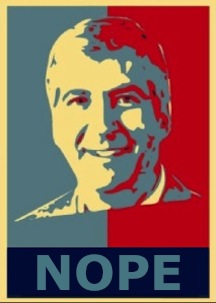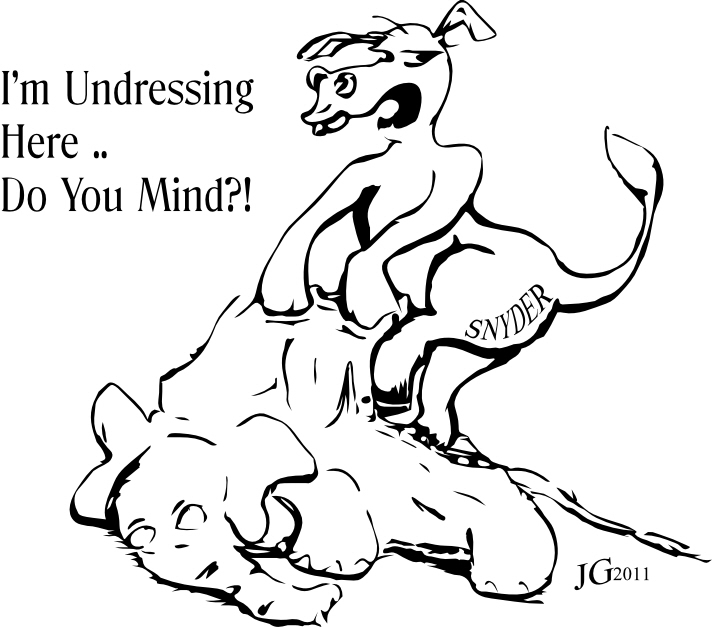
 |
NAVIGATION
|
NEWS TIPS!RightMichigan.com

Who are the NERD fund donors Mr Snyder?Tweets about "#RightMi, -YoungLibertyMI, -dennislennox,"

 |
The NPVIC Will Rear It's Head . . . AgainBy Kevin Rex Heine, Section News
Today, for those paying attention, was a very important day in the timeline of the 2012 Presidential Election. Today, on the first Monday following the second Wednesday of December, at such place and time as determined by the local legislature, the duly appointed and elected Presidential Electors met in their respective jurisdictions and cast their votes for President and Vice President of the United States - at least one of whom must not reside in the same jurisdiction as they do. Though the 51 jurisdictions do not appear to have reported yet, 27 of them are expected to cast their votes one way, and 24 of them are expected to cast their votes the other way.
And yet, for the past 41 days, perhaps because even as recently as the day before Election Day eleven states (at a total of 146 electoral votes) were considered to be in the "tossup" column, there has been considerable behind-the-scenes debate about a potential "reform" to the way that some states apportion their electoral votes, a reform that, had it been in place during this election, may have significantly impacted the outcome. Actually, instead of "reform" I should be referring to this as a "back to the basics" approach to the Electoral College.
During the Federal Constitutional Convention (May 14th through September 17th, 1787), one issue that was frequently discussed was the method of determining the nation's chief executive. Four potential solutions were proposed:
On June 1st Mr. Roger Sherman of Connecticut proposed that the National Executive be elected to office by the National Legislature. Though initially approved on June 2nd, the Sherman proposal was ultimately rejected on these grounds:
Also on June 2nd, Mr. Elbridge Gerry of Massachusetts proposed that the National Executive be elected by the State Executives (in concurrence with their respective legislatures). On June 9th, the Gerry proposal was unanimously rejected on these grounds:
There were originally three methods employed by state legislatures to select their presidential electors:
Yes, apparently, according to The Atlantic this morning, there are efforts actively underway in six states - Michigan, Pennsylvania, Wisconsin, Florida, Ohio, and Virginia - to shift the Electoral College apportionment from the current winner-take-all-at-large appointment method to one or another variant of the Massachusetts Method. Predictably, this has the lefty sites (such as Mother Jones, The Nation, Slate, and the Washington Post) howling about how the Republicans are now out to gerrymander the Electoral College in key states by rigging elections to engage in voter suppression and siphon electoral votes away from reliably blue states. Just as predictably, these articles all either directly or indirectly refer to the National Popular Vote plan as a "more principled way" to reform the Electoral College. And if you want Exhibit "A" for why the National Popular Vote Interstate Compact is a bad idea, all you need to do is check out this Presidential Election Results By County map from Mark Newman at the University of Michigan to understand why the federal convention promptly rejected this idea. The 30 or so largest metropolitan areas will decide the presidential election every time, and every damn one of them are notorious for not only for voting bluer than a United Nations battle helmet, but also for having issues with election fraud. There's a reason that both Maryland and New Jersey have introduced legislation to withdraw from this compact, and that New York has passed on it all three times that enabling legislation has been introduced (but none of this will you hear from the NPV trolls). Rob Richie (co-author of Every Vote Equal) over at Fair Vote, in the course of his kvetching about the Massachusetts Method, provides us with an interesting pair of downloadable charts (600 × 578 and 600 × 379) that analyze five possible alternate electoral vote scenarios had some form of not-winner-take-all method been on the books in the six states where Massachusetts Method legislation is now in the hopper. While the chart is instructive, it's also a tad oversimplified (assuming that all six states in question all adopt the same alternative scenario). It also assumes that only seven additional states (Maine and Nebraska already use the Massachusetts Method) would sign onto some variant of the Congressional District Method. I want to take this logic one step further. David Nir over at the Daily Kos has crowdsourced a project to tabulate the 2012 presidential results by congressional district for every jurisdiction participating in the Electoral College (all 50 states plus DC). I like the idea, and I think it'd be a great theoretical exercise to see how the 2012 presidential election would have turned out if every state with more than 3 EV would have used the Massachusetts Method . . . so I picked it up as a research project (with the specific intent of scooping the Daily Kos on the final report). I've been tracking the Daily Kos project progress (links to detailed state-by-state spreadsheets with "precise calculations" are here), as well as doing my own research. In double-checking the Kos' numbers on a few of the smaller states (HI, MD, NH, OR, and RI), I've observed that while their electoral results are probably correct, the supporting district-by-district data is suspect and will need to be verified against the official data from the states' respective election authorities . . . I'm a stickler for detail like that. What I can tell you so far is that, between the states completed by either me or the Daily Kos and the states "in progress" by either me or the Daily Kos (AL, IN, MI, MO, OH, PA, & TX), a total of 463 electoral votes have been accounted for. (Only KS, MA, NJ, & NY are still not touched.) Thus far, the "breakdown by district" electoral tally is 246 for Romney and 217 for Obama. The smallest state to split its electoral delegation appears to be New Mexico (5 EV) - NM CD-02 went for Romney - and the largest states so far to go "effectively winner-take-all" were Connecticut and Oklahoma (7 EV each). Of course, no matter how the results ultimately sort out, the lefties in the media and education will swear up and down that the Founding Fathers' design is antiquated and should be replaced with a principled reform that treats all people equally. Keep in mind that these are the same fools who've been conditioned over the past two generations to believe that America is a democracy. Which explains much.
The NPVIC Will Rear It's Head . . . Again | 0 comments ( topical, 0 hidden)
|
Related Links+ Scoop+ timeline of the 2012 Presidential Election + on the first Monday following the second Wednesday of December + as recently as the day before Election Day + Federal Constitutional Convention + potential solutions + Article 2, Section 1, Clauses 2 & 4 of the U. S. Constitution + Amendment 12 + Appointmen t by state legislature + Electoral District Method + Congressio nal District Method + according to The Atlantic this morning + Mother Jones + The Nation + Slate + Washington Post + National Popular Vote Interstate Compact + Presidenti al Election Results By County + Mark Newman at the University of Michigan + co-author of Every Vote Equal + in the course of his kvetching about the Massachusetts Method + 600 × 578 + 600 × 379 + tabulate the 2012 presidential results by congressional district for every jurisdiction + links to detailed state-by-state spreadsheets with "precise calculations" are here + Also by Kevin Rex Heine |